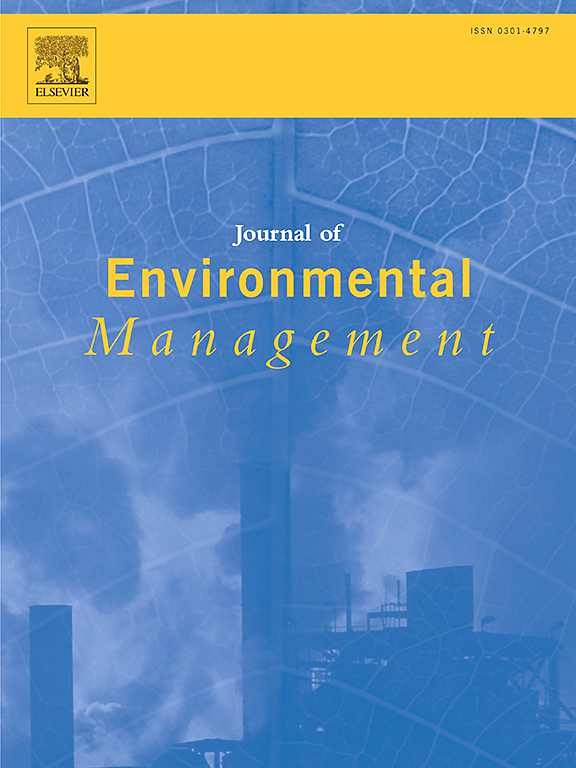利用生物炭和蚯蚓修复多金属土壤:评估重金属形态、土壤微生物活动和蚯蚓的反应
IF 8.4
2区 环境科学与生态学
Q1 ENVIRONMENTAL SCIENCES
引用次数: 0
摘要
近年来,生物炭在土壤修复中的应用越来越受到人们的关注。此外,已知蚯蚓通过其生物活性影响污染物的迁移。然而,生物炭和蚯蚓对土壤重金属形态和土壤质量的综合影响尚未得到充分的研究。研究了3种生物炭(5%、10%和15%)对土壤重金属形态(Pb/Zn/Cd/Ni)、土壤理化性质(pH、阳离子交换能力)、酶活性(β-葡萄糖苷酶、碱性磷酸酶、脲酶、FDA)和细菌功能多样性的影响。此外,还利用细胞毒性(溶酶体膜稳定性)、遗传毒性(微核频率)、氧化应激和神经毒性等生物标志物对蚯蚓的反应进行了评估。我们的研究结果表明,生物炭和蚯蚓以不同的方式影响土壤pH值。当它们一起使用时,有助于减少土壤中易移动、易吸收的金属形式,同时增加稳定、不易获得的金属形式。这表明,这种组合可以降低这些金属对环境的危害。土壤酶活性随污染程度和生物炭含量的变化而变化。在5%的生物炭处理下观察到显著的改善。此外,通过降低氧化应激、细胞毒性和遗传毒性,生物炭减轻了重金属对蚯蚓的毒性作用。我们的研究结果表明,生物炭与蚯蚓活动的结合,特别是在5%的施用量下,可以通过稳定重金属和改善土壤性质来加强土壤修复,这为污染土壤的恢复提供了一个有希望的绿色策略。本文章由计算机程序翻译,如有差异,请以英文原文为准。
Remediation of polymetallic soils using biochar and earthworms: assessing heavy metal speciation, soil microbiological activities and earthworms’ responses
The use of biochar in soil remediation has received increasing attention in recent years. Furthermore, earthworms are known to influence pollutant mobility through their biological activity. However, the combined effects of biochar and earthworms on the speciation of heavy metals and the quality of the soil have not been sufficiently investigated. The present investigation evaluated the influence of Eisenia andrei in polymetallic contaminated soils amended with three biochar applications (5 %, 10 % and 15 %) on heavy metal speciation (Pb/Zn/Cd/Ni), soil physico-chemical properties (pH, cation exchange capacity), enzyme activities (β-glucosidase, alkaline phosphatase, urease, FDA) and bacterial functional diversity. In addition, the response of earthworms was assessed using biomarkers of cytotoxicity (stability of lysosomal membranes), genotoxicity (frequency of micronuclei), oxidative stress and neurotoxicity. Our results revealed that biochar and earthworms affect soil pH in different ways. When used together, they helped reduce the mobile, easily absorbed forms of metals in the soil while increasing their stable, less available forms. This suggests that the combination could make these metals less harmful to the environment. Soil enzyme activities varied with contamination level and biochar rate. Significant improvements were observed at the 5 % biochar treatment. In addition, as evidenced by reduced oxidative stress, cytotoxicity and genotoxicity, biochar mitigated the toxic effects of heavy metals on earthworms. Our findings demonstrate that the integration of biochar, particularly at a 5 % application rate, with earthworm activity can enhance soil remediation through stabilization of heavy metals and improvement of soil properties which offer a promising green strategy for the restoration of contaminated soils.
求助全文
通过发布文献求助,成功后即可免费获取论文全文。
去求助
来源期刊

Journal of Environmental Management
环境科学-环境科学
CiteScore
13.70
自引率
5.70%
发文量
2477
审稿时长
84 days
期刊介绍:
The Journal of Environmental Management is a journal for the publication of peer reviewed, original research for all aspects of management and the managed use of the environment, both natural and man-made.Critical review articles are also welcome; submission of these is strongly encouraged.
 求助内容:
求助内容: 应助结果提醒方式:
应助结果提醒方式:


